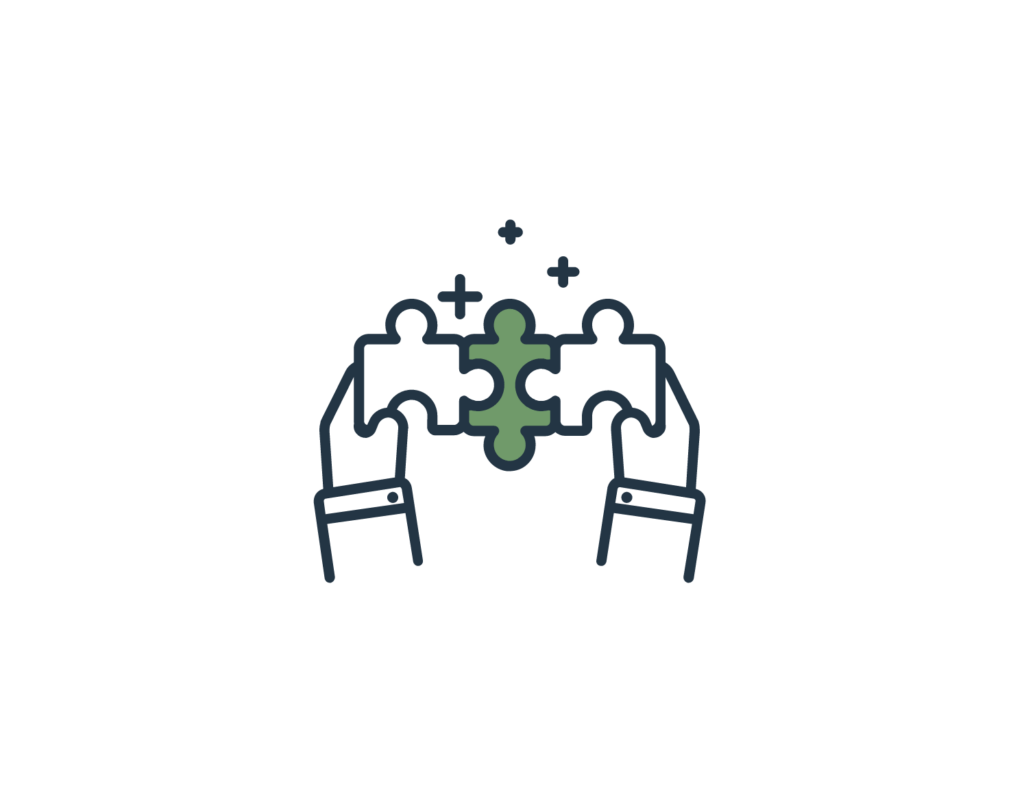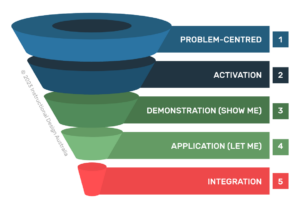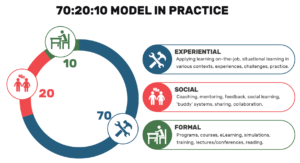Collaborative Learning Strategies
What is collaborative learning?
Simply put, collaborative learning strategies are instructional methods that encourage learners to work together to achieve shared goals. It’s not just about group work; it’s about creating an environment where knowledge is constructed through social interaction, shared problem-solving, and mutual support.
Imagine a classroom (virtual or physical) buzzing with energy as learners bounce ideas off each other, challenge assumptions, and collectively build understanding. That’s collaborative learning in action!
Why use collaborative learning strategies?
As a learning designer, you’re always on the hunt for ways to make your content more engaging and effective, right? Well, collaborative learning strategies might just be your new secret weapon. Here’s why:
- Enhanced engagement: When learners are actively involved in the learning process, they’re more likely to stay focused and motivated.
- Deeper understanding: Through discussion and debate, learners can explore concepts from multiple perspectives, leading to more profound insights.
- Real-world skill development: Collaboration is a crucial 21st-century skill. By incorporating it into your designs, you’re preparing learners for the modern workplace.
- Improved retention: According to a study by Springer et al. (1999), collaborative learning techniques can lead to higher achievement and greater retention of learned material compared to individual or competitive learning approaches.
Amplifying the 70:20:10 model
As a learning designer, you’re likely familiar with the 70:20:10 model for learning and development. If not, don’t fret – you can dive into the details here. What’s crucial is understanding how collaborative learning strategies can turbocharge this widely-adopted framework.
Here’s the scoop on why collaborative learning and 70:20:10 are a match made in learning heaven:
- Relationship rocket fuel: Collaborative strategies supercharge the ’20’ portion of the model, fostering those all-important developmental relationships and peer-to-peer learning experiences.
- Experience enhancer: By tackling real-world problems together, learners boost the quality and intentionality of their on-the-job learning – the crucial ’70’ part of the equation.
- Formal training transformer: Even in structured learning environments (the ’10’), collaborative approaches turn passive listening into active engagement, making every minute count.
- The great unifier: Think of collaborative learning as the binding agent that blends all three elements of 70:20:10 into a cohesive, tasty learning feast.
- Real-world replica: By incorporating collaborative strategies, you’re mirroring the interconnected nature of modern workplaces, prepping learners for the collaborative challenges they’ll face on the job.
So, as you craft your learning experiences, consider collaborative learning strategies as your way of bringing the 70:20:10 model to life. They’re not just a nice-to-have; they’re the threads that weave formal training, social learning, and on-the-job experiences into a powerful, lasting learning.
Breathing life into collaborative learning
Ready to infuse your learning designs with the power of collaboration? Here are some practical strategies to get you started:

Think-pair-share
Pose a question or problem, give learners time to think individually, then have them discuss in pairs before sharing with the larger group.

Jigsaw method
Divide content into sections, assign each to a group to become “experts,” then regroup to teach others.

Collaborative mind-mapping
Use digital tools like Miro for group brainstorming and concept organisation.

Peer review workshops
Implement structured peer feedback sessions for projects or assignments.

Problem-based learning
Present real-world problems for groups to solve together, applying course concepts.
Collaborative learning success stories
Collaborative learning isn’t just theoretical – it’s making waves in real classrooms and training programs. Here are a couple of inspiring examples:
- Corporate Training at Google: Google’s “g2g” (Googler-to-Googler) program encourages employees to teach and learn from each other, fostering a culture of continuous learning and collaboration (Bock, 2015).
- Medical Education: The University of California, San Francisco School of Medicine implemented team-based learning in their curriculum, resulting in improved student engagement and performance in complex problem-solving tasks.
Nuggets of wisdom
- Set clear expectations: Clearly communicate goals, roles, and evaluation criteria for collaborative activities.
- Leverage technology: Use collaborative tools like shared documents, video conferencing, and discussion forums to facilitate interaction, especially in remote learning environments.
- Monitor and support: Be present to guide discussions, resolve conflicts, and ensure all voices are heard.
- Reflect and iterate: Regularly gather feedback from learners and be willing to adjust your approach based on what works best for your specific audience.
- Balance collaboration and individual accountability: While promoting teamwork, ensure there are also opportunities for individual assessment and reflection.
By incorporating collaborative learning strategies into your designs, you’re not just creating courses – you’re fostering communities of learners who support and challenge each other.
Remember, the journey to mastering collaborative learning strategies is itself a collaborative process. Share your experiences, learn from others, and don’t be afraid to experiment.
References
Bock, L. (2015). Work Rules!: Insights from Inside Google That Will Transform How You Live and Lead. Twelve.
Springer, L., Stanne, M. E., & Donovan, S. S. (1999). Effects of small-group learning on undergraduates in science, mathematics, engineering, and technology: A meta-analysis. Review of Educational Research, 69(1), 21-51.
Related articles



Bloom’s Taxonomy: A Guide for Creating Effective Learning Outcomes
Merrill’s Instructional Design Principles
The 70:20:10 Learning Model
